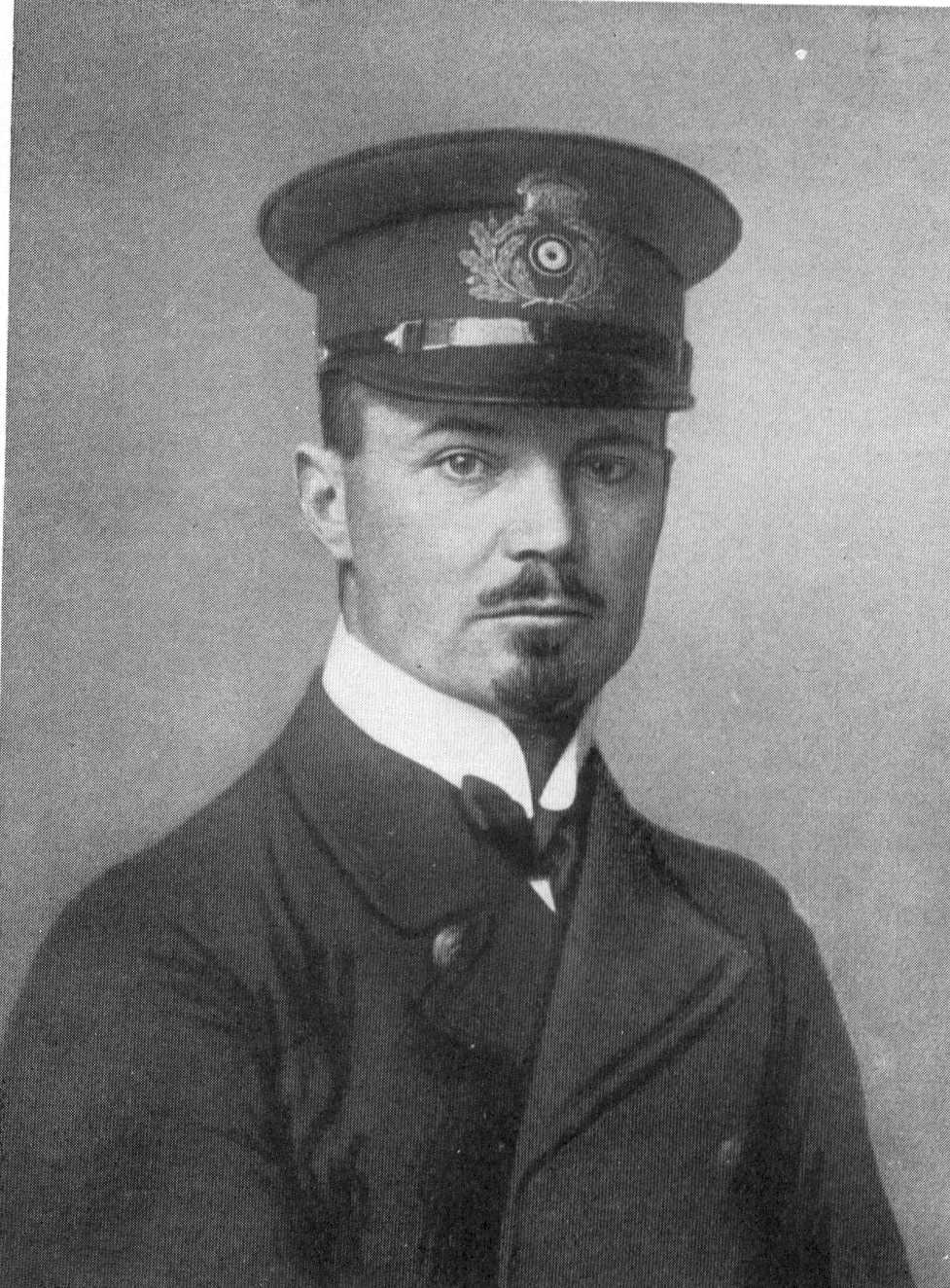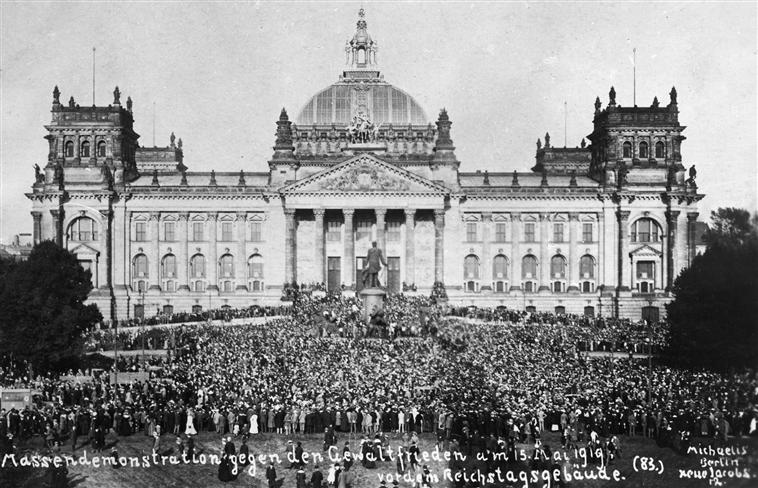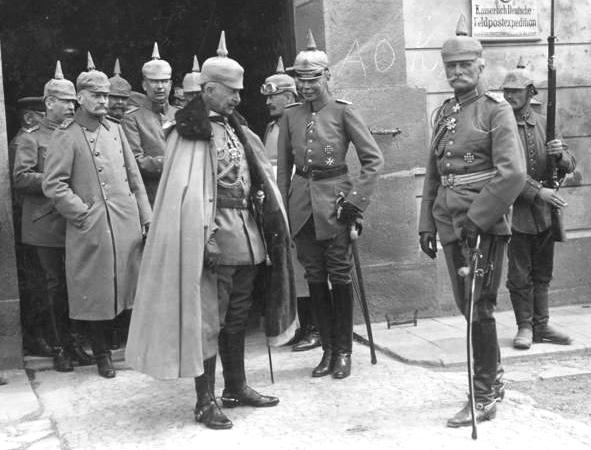|
A Princess In Berlin
''A Princess in Berlin'' is a 1980 historical novel by Arthur R.G. Solmssen. Plot Peter Ellis is a young American artist studying in Paris in 1922. His prominent Philadelphia family ends his funding to persuade him to return home to become a doctor, but after suffering shell shock as an ambulance driver during World War I Ellis is uninterested in a conventional career. He reunites with Christoph Keith, a former Luftstreitkräfte pilot whose life he saved during the Battle of Verdun in 1916. Now a banker, Keith suggests that Ellis move to Berlin, as due to hyperinflation in the Weimar Republic it has a very low cost of living for those with hard currency. Through Keith Ellis meets the Waldsteins (as fictionalized family of German banker Georg Solmssen), an influential, wealthy, and long- assimilated German Jewish banking family, and he and the beautiful and innocent Lili, the youngest Waldstein, fall in love. While studying art with Fritz Falke (a fictionalized George Grosz), ... [...More Info...] [...Related Items...] OR: [Wikipedia] [Google] [Baidu] |
Arthur R
Arthur is a common male given name of Brythonic origin. Its popularity derives from it being the name of the legendary hero King Arthur. The etymology is disputed. It may derive from the Celtic ''Artos'' meaning “Bear”. Another theory, more widely believed, is that the name is derived from the Roman clan '' Artorius'' who lived in Roman Britain for centuries. A common spelling variant used in many Slavic, Romance, and Germanic languages is Artur. In Spanish and Italian it is Arturo. Etymology The earliest datable attestation of the name Arthur is in the early 9th century Welsh-Latin text '' Historia Brittonum'', where it refers to a circa 5th to 6th-century Briton general who fought against the invading Saxons, and who later gave rise to the famous King Arthur of medieval legend and literature. A possible earlier mention of the same man is to be found in the epic Welsh poem '' Y Gododdin'' by Aneirin, which some scholars assign to the late 6th century, though this is stil ... [...More Info...] [...Related Items...] OR: [Wikipedia] [Google] [Baidu] |
George Grosz
George Grosz (; born Georg Ehrenfried Groß; July 26, 1893 – July 6, 1959) was a German artist known especially for his caricatural drawings and paintings of Berlin life in the 1920s. He was a prominent member of the Berlin Dada and New Objectivity groups during the Weimar Republic. He immigrated to the United States in 1933, and became a naturalized citizen in 1938. Abandoning the style and subject matter of his earlier work, he exhibited regularly and taught for many years at the Art Students League of New York. In 1959 he returned to Berlin, where he died shortly afterwards. Early life Grosz was born Georg Ehrenfried Groß in Berlin, Germany, the third child of a pub owner. His parents were devoutly Lutheran. Grosz grew up in the Pomeranian town of Stolp (now Słupsk, Poland). After his father's death in 1900, he moved to the Wedding district of Berlin with his mother and sisters. At the urging of his cousin, the young Grosz began attending a weekly drawing class ... [...More Info...] [...Related Items...] OR: [Wikipedia] [Google] [Baidu] |
Occupation Of The Ruhr
The Occupation of the Ruhr (german: link=no, Ruhrbesetzung) was a period of military occupation of the Ruhr region of Germany by France and Belgium between 11 January 1923 and 25 August 1925. France and Belgium occupied the heavily industrialized Ruhr Valley in response to Germany defaulting on reparation payments dictated by the victorious powers after World War I in the Treaty of Versailles. Occupation of the Ruhr worsened the economic crisis in Germany, and German civilians engaged in acts of passive resistance and civil disobedience, during which 130 were killed. France and Belgium, facing economic and international pressure, accepted the Dawes Plan to restructure Germany's payment of war reparations in 1924 and withdrew their troops from the Ruhr by August 1925. The Occupation of the Ruhr contributed to German rearmament and the growth of radical right-wing and left-wing movements in Germany. Background The Ruhr region had been occupied by Allied troops in ... [...More Info...] [...Related Items...] OR: [Wikipedia] [Google] [Baidu] |
Currency Trading
The foreign exchange market (Forex, FX, or currency market) is a global decentralized or over-the-counter (OTC) market for the trading of currencies. This market determines foreign exchange rates for every currency. It includes all aspects of buying, selling and exchanging currencies at current or determined prices. In terms of trading volume, it is by far the largest market in the world, followed by the credit market. The main participants in this market are the larger international banks. Financial centers around the world function as anchors of trading between a wide range of multiple types of buyers and sellers around the clock, with the exception of weekends. Since currencies are always traded in pairs, the foreign exchange market does not set a currency's absolute value but rather determines its relative value by setting the market price of one currency if paid for with another. Ex: USD 1 is worth X CAD, or CHF, or JPY, etc. The foreign exchange market works thr ... [...More Info...] [...Related Items...] OR: [Wikipedia] [Google] [Baidu] |
Marinebrigade Ehrhardt
The Marinebrigade Ehrhardt, also known as the Ehrhardt Brigade, was a Freikorps unit of the early Weimar Republic. It was formed on 17 February 1919 as the Second Marine Brigade from members of the former Imperial German Navy under the leadership of Hermann Ehrhardt. The Brigade was used primarily in the suppression of the Bavarian Soviet Republic and the First Silesian Uprising, both in the first half of 1919. In March 1920, faced with its imminent disbanding by orders of the government in Berlin, the Marine Brigade was one of the main supporters of the Kapp Putsch that tried to overthrow the Weimar Republic. After the putsch failed and the Brigade was disbanded in May, many of the former members formed the secret Organisation Consul under Ehrhardt's leadership. Before it was banned in 1922, it carried out numerous assassinations and murders in a continuation of the attempts to overthrow the Republic. Formation and structure On 27 January 1919, during the Revolutio ... [...More Info...] [...Related Items...] OR: [Wikipedia] [Google] [Baidu] |
German National People's Party
The German National People's Party (german: Deutschnationale Volkspartei, DNVP) was a national-conservative party in Germany during the Weimar Republic. Before the rise of the Nazi Party, it was the major conservative and nationalist party in Weimar Germany. It was an alliance of conservative, nationalists, reactionary monarchists, völkisch and antisemitic elements supported by the Pan-German League.Nicholls, David (2000) ''Adolf Hitler: a biographical companion'' Oxford: ABC-CLIO. p.178. Quote: "The main nationalist party the German National People's Party DNVP was divided between reactionary conservative monarchists, who wished to turn the clock back to the pre-1918 Kaisereich, and more radical volkisch and anti-semitic elements. It also inherited the support of old Pan-German League, whose nationalism rested on belief in the inherent superiority of the German people" It was formed in late 1918 after Germany's defeat in World War I and the November Revolution that top ... [...More Info...] [...Related Items...] OR: [Wikipedia] [Google] [Baidu] |
Communist Party Of Germany
The Communist Party of Germany (german: Kommunistische Partei Deutschlands, , KPD ) was a major political party in the Weimar Republic between 1918 and 1933, an underground resistance movement in Nazi Germany, and a minor party in West Germany in the postwar period until it was banned by the Federal Constitutional Court in 1956. Founded in the aftermath of the First World War by socialists who had opposed the war, the party joined the Spartacist uprising of January 1919, which sought to establish a soviet republic in Germany. After the defeat of the uprising, and the murder of KPD leaders Rosa Luxemburg, Karl Liebknecht and Leo Jogiches, the party temporarily steered a more moderate, parliamentarian course under the leadership of Paul Levi. During the Weimar Republic period, the KPD usually polled between 10 and 15 percent of the vote and was represented in the national and in state parliaments. Under the leadership of Ernst Thälmann from 1925 the party became thoroug ... [...More Info...] [...Related Items...] OR: [Wikipedia] [Google] [Baidu] |
Treaty Of Rapallo (1922)
The Treaty of Rapallo was an agreement signed on 16 April 1922 between the German Republic and Soviet Russia under which both renounced all territorial and financial claims against each other and opened friendly diplomatic relations. The treaty was negotiated by Russian Foreign Minister Georgi Chicherin and German Foreign Minister Walther Rathenau. It was a major victory for Russia especially and also Germany, and a major disappointment to France and the United Kingdom. The term "spirit of Rapallo" was used for an improvement in friendly relations between Germany and Russia.Mueller The treaty was signed in Rapallo. Ratifications were exchanged in Berlin on 31 January 1923, and registered in ''League of Nations Treaty Series'' on 19 September 1923. The treaty did not include any military provisions, bu ... [...More Info...] [...Related Items...] OR: [Wikipedia] [Google] [Baidu] |
Treaty Of Versailles
The Treaty of Versailles (french: Traité de Versailles; german: Versailler Vertrag, ) was the most important of the peace treaties of World War I. It ended the state of war between Germany and the Allied Powers. It was signed on 28 June 1919 in the Palace of Versailles, exactly five years after the assassination of Archduke Franz Ferdinand, which led to the war. The other Central Powers on the German side signed separate treaties. Although the armistice of 11 November 1918 ended the actual fighting, it took six months of Allied negotiations at the Paris Peace Conference to conclude the peace treaty. The treaty was registered by the Secretariat of the League of Nations on 21 October 1919. Of the many provisions in the treaty, one of the most important and controversial was: "The Allied and Associated Governments affirm and Germany accepts the responsibility of Germany and her allies for causing all the loss and damage to which the Allied and Associated Governments and t ... [...More Info...] [...Related Items...] OR: [Wikipedia] [Google] [Baidu] |
World War I Reparations
Following the ratification of article 231 of the Treaty of Versailles at the conclusion of World War I, the Central Powers were made to give war reparations to the Allied Powers. Each of the defeated powers was required to make payments in either cash or kind. Because of the financial situation in Austria, Hungary, and Turkey after the war, few to no reparations were paid and the requirements for reparations were cancelled. Bulgaria, having paid only a fraction of what was required, saw its reparation figure reduced and then cancelled. Historians have recognized the German requirement to pay reparations as the "chief battleground of the post-war era" and "the focus of the power struggle between France and Germany over whether the Versailles Treaty was to be enforced or revised." The Treaty of Versailles (signed in 1919) and the 1921 London Schedule of Payments required Germany to pay 132 billion gold marks ll values are contemporary, unless otherwise stated in reparatio ... [...More Info...] [...Related Items...] OR: [Wikipedia] [Google] [Baidu] |
Hermann Göring
Hermann Wilhelm Göring (or Goering; ; 12 January 1893 – 15 October 1946) was a German politician, military leader and convicted war criminal. He was one of the most powerful figures in the Nazi Party, which ruled Germany from 1933 to 1945. A veteran World War I fighter pilot ace, Göring was a recipient of the ("The Blue Max"). He was the last commander of ''Jagdgeschwader'' 1 (Jasta 1), the fighter wing once led by Manfred von Richthofen. An early member of the Nazi Party, Göring was among those wounded in Adolf Hitler's failed Beer Hall Putsch in 1923. While receiving treatment for his injuries, he developed an addiction to morphine which persisted until the last year of his life. After Hitler became Chancellor of Germany in 1933, Göring was named as minister without portfolio in the new government. One of his first acts as a cabinet minister was to oversee the creation of the Gestapo, which he ceded to Heinrich Himmler in 1934. Following the establishment of t ... [...More Info...] [...Related Items...] OR: [Wikipedia] [Google] [Baidu] |
Hans Von Seeckt
Johannes "Hans" Friedrich Leopold von Seeckt (22 April 1866 – 27 December 1936) was a German military officer who served as Chief of Staff to August von Mackensen and was a central figure in planning the victories Mackensen achieved for Germany in the east during the First World War. During the years of the Weimar Republic he was chief of staff for the ''Reichswehr'' from 1919 to 1920 and commander in chief of the German Army from 1920 until he resigned in October 1926. During this period he engaged in the reorganization of the army and laid the foundation for the doctrine, tactics, organization, and training of the German army. By the time Seeckt left the German Army in 1926 the ''Reichswehr'' had a clear, standardized operational doctrine, as well as a precise theory on the future methods of combat which greatly influenced the military campaigns fought by the ''Wehrmacht'' during the first half of the Second World War. While Seeckt undertook multiple programs to get around the ... [...More Info...] [...Related Items...] OR: [Wikipedia] [Google] [Baidu] |






